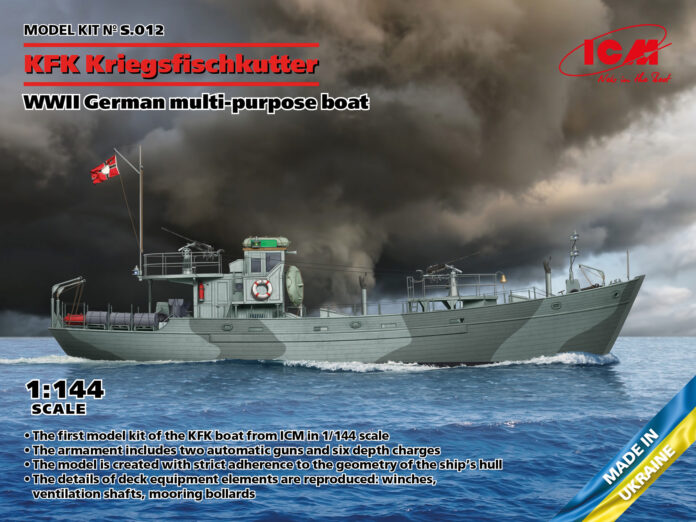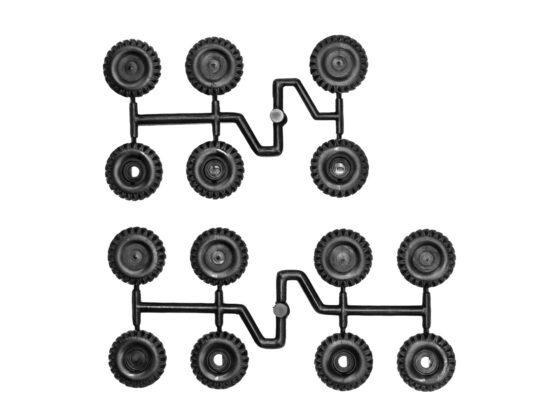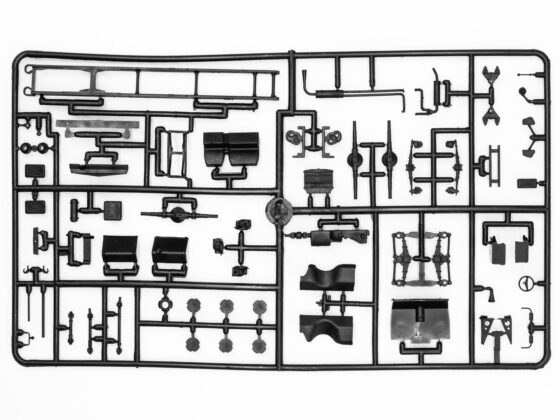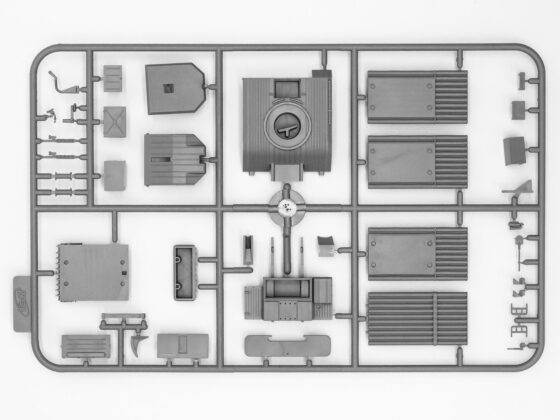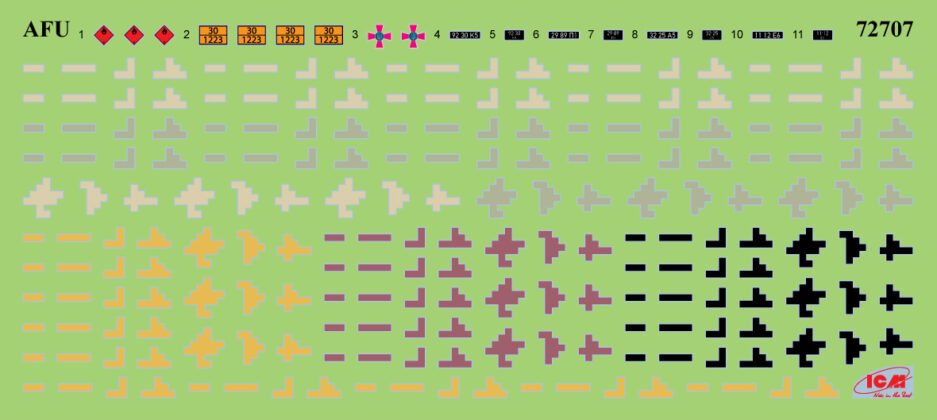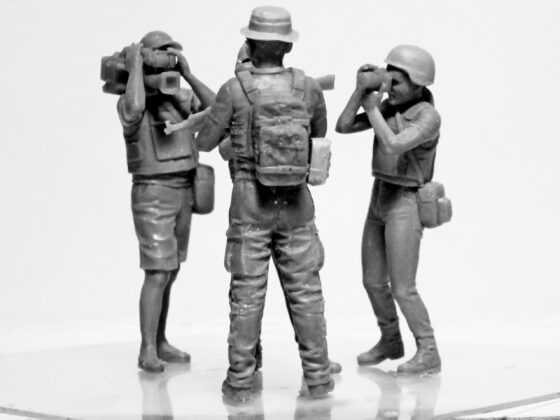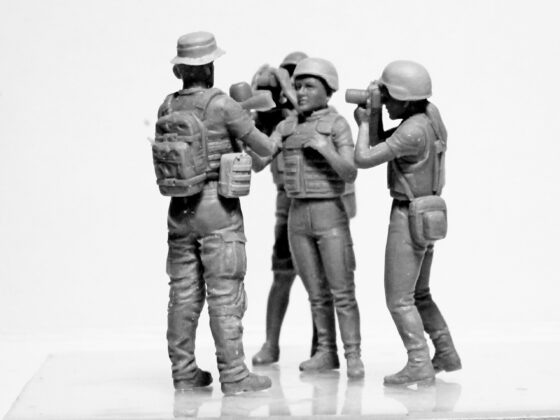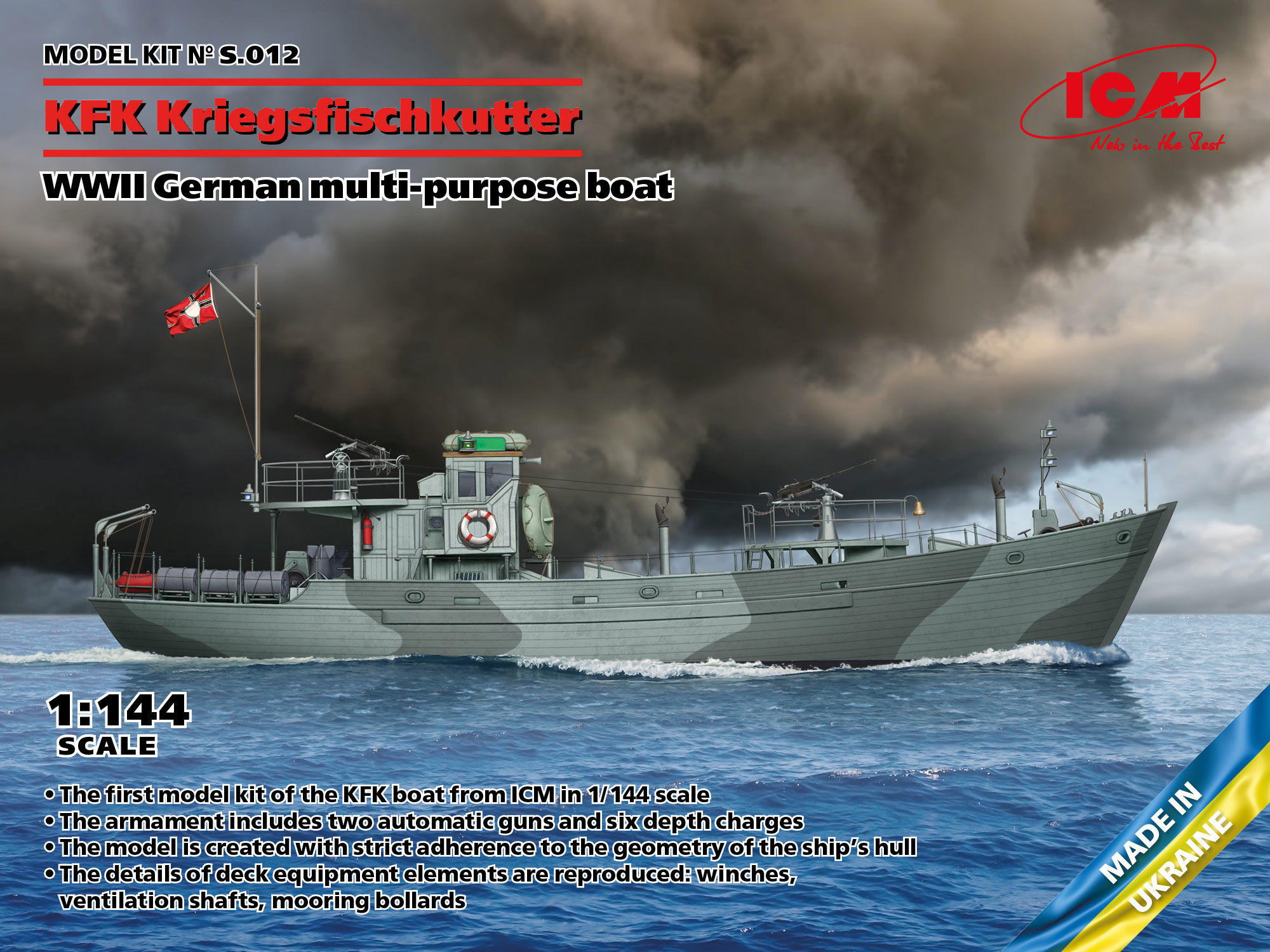 1/144 KFK Kriegsfischkutter
1/144 KFK Kriegsfischkutter
WWII German multi-purpose boat
Universal boats of the KFK (Kriegsfischkutter) type were developed in late 1941 on the basis of a fishing seiner. They were built by various companies in Germany and other countries (including neutral Sweden). After a small reequipping, they could be used as trawlers (they could carry contact, magnetic, and acoustic trawls), submarine hunters (a hydroacoustic station was installed on the boats), or patrol boats. The boats’ hulls were made of wood, but some shipyards made them of metal or composite according to their technological requirements.
The basic armament included 20-mm or 37-mm guns, mounted on a platform in the bow and on top of the wheelhouse. Over time, armament options changed and could include one 37-mm and up to six 20-mm automatic guns
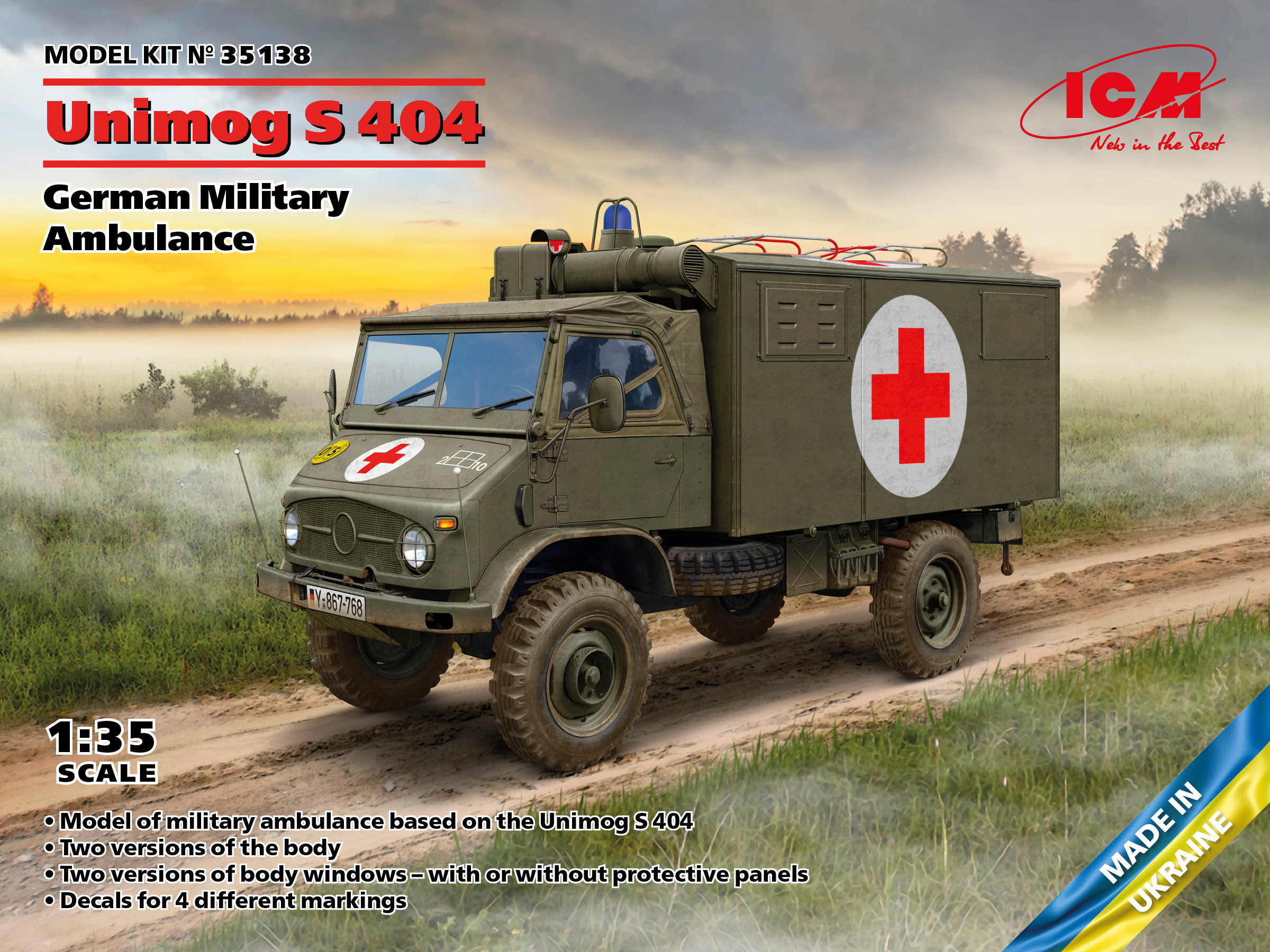 1/35 Unimog S 404
1/35 Unimog S 404
German Military Ambulance
The payload of one and a half tons made it possible to successfully use the Unimog S as an ambulance (Krankenkraftwagen). Such vehicles were built using standard closed bodies in various versions. The interior of the bodies could be adapted to meet different needs – for example, to carry four stretchers with patients, or to combine stretchers and seats. Wide doors in the rear of the body facilitated the process of loading stretchers inside. The ambulances had large white circles with red crosses to facilitate identification, a detail that was of great importance in the context of possible military operations. As in the case of standard general-purpose vans, different versions of the bodies appeared during operation, with differences in the details of the roof, windows, and so on.
Due to their excellent cross-country ability and good performance, these vehicles were in service with the Bundeswehr for many years. According to various estimates, the total number of Unimog S 404 ambulances produced is about 2,000.
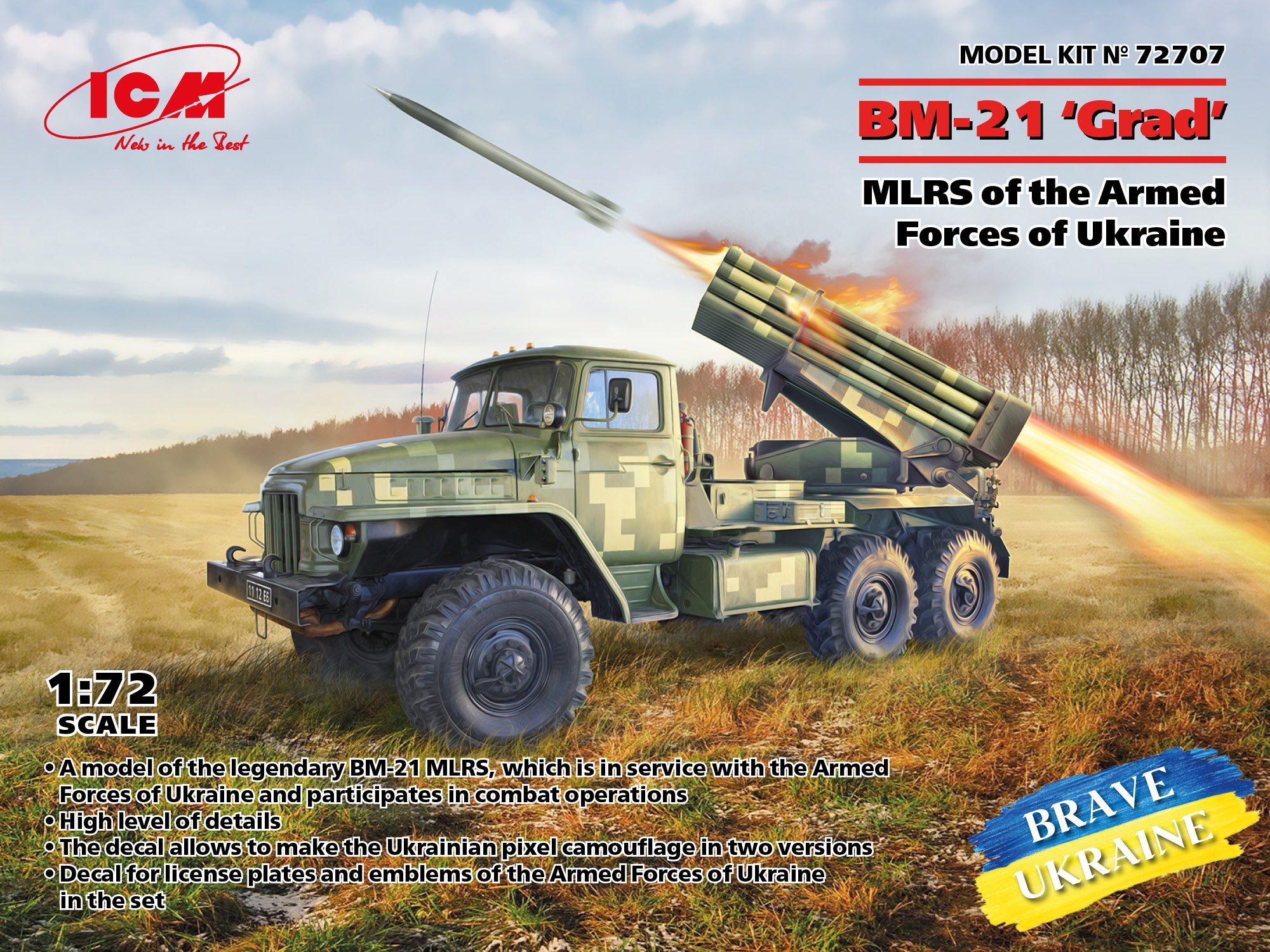 1/72 BM-21 ‘Grad’
1/72 BM-21 ‘Grad’
MLRS of the Armed Forces of Ukraine
The development of the BM-21 Grad MLRS began in 1960 and its serial production began in 1964. It is designed to provide general fire support for army formations, destroying manpower, armored vehicles, unarmored vehicles, field fortifications, laying minefields, and creating smoke screens. The artillery part consists of a package of 40 tubes on a platform that can rotate in the vertical and horizontal planes. The time for a full salvo is 20 seconds. The fire salvo can be controlled both from the cockpit and with the help of a remote control. This MLRS can use various types of ammunition: high-explosive, cluster, incendiary, lighting, and smoke. The most common is the high-explosive fragmentation projectile, which has a maximum range of 20.4 km. There are also types of ammunition for this MLRS that have a range of up to 40 km. The system is loaded manually by a combat crew. As of 2022, the BM-21 Grad was the most mass-produced MLRS of the Armed Forces of Ukraine.
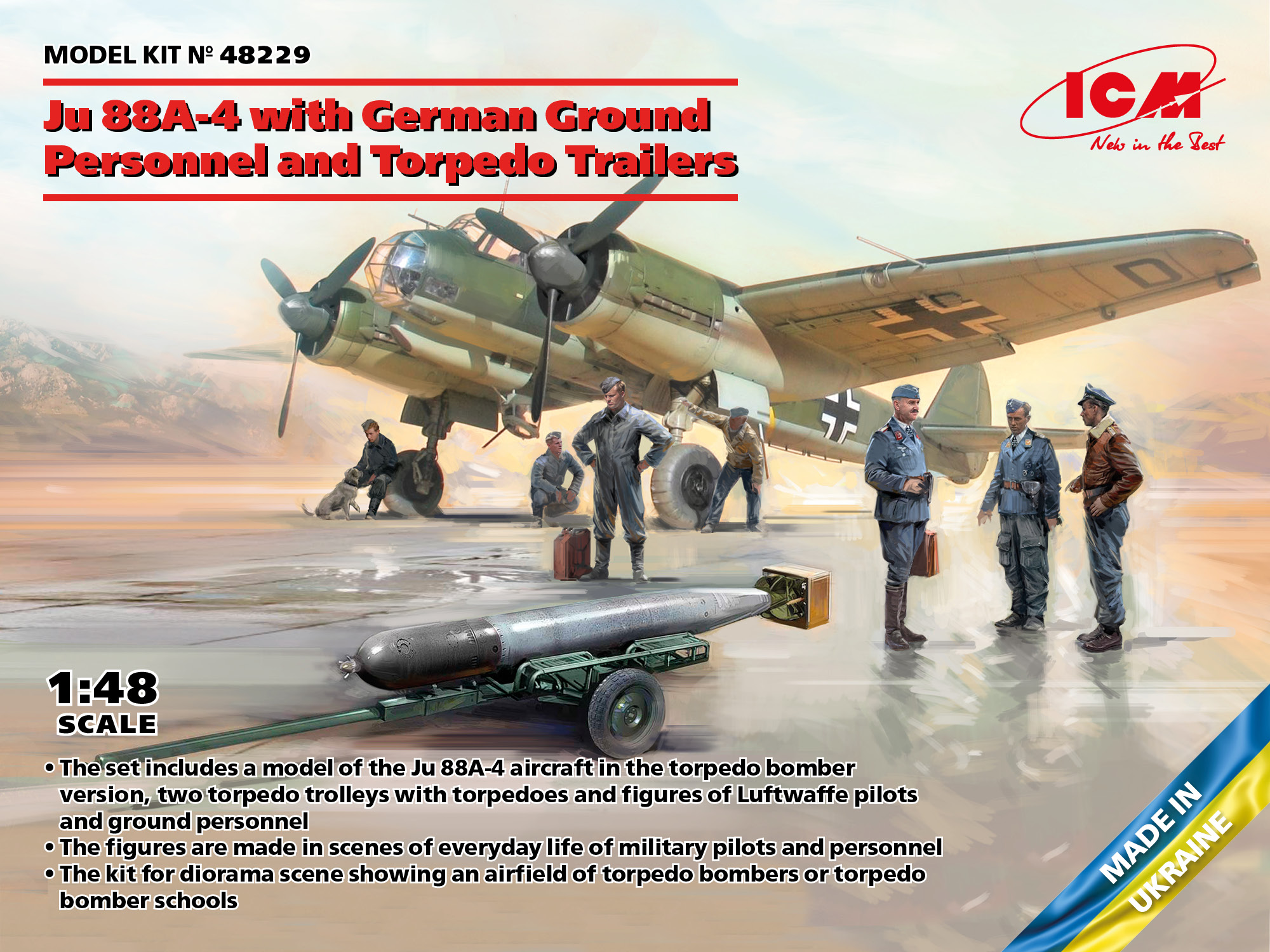 1/48 Ju 88A-4
1/48 Ju 88A-4
with German Ground Personnel and Torpedo Trailers
The Luftwaffe relied heavily on bomb-armed aircraft in its concept of naval warfare. However, over time, the need for aircraft with torpedo armament became apparent, which made it possible to effectively perform missions to hit sea targets. As of 1941, the German Air Force already had five torpedo squadrons, each with 12 aircraft according to the staffing table. From the beginning of 1942, front-line Ju-88 bombers of the A-4 modification, which had good maneuverability and fairly strong defensive weapons, were converted into torpedo-bearing versions.
The standard strike armament of these aircraft was F5b torpedoes. The weight of the warhead of such torpedoes reached 250 kg, and the range was up to 6000 meters (at a speed of 24 knots). In addition to “free hunting” for single ships, torpedo aircraft were also used against large, well-protected caravans, warship detachments, and amphibious assault forces.
Luftwaffe torpedo bombers could be based at airfields in Italy, Southern France, or Northern Norway. To train flight personnel and practice the tactics of using torpedo bombers, torpedo bomber training centers were established, one of which was located in Groseto, Italy.
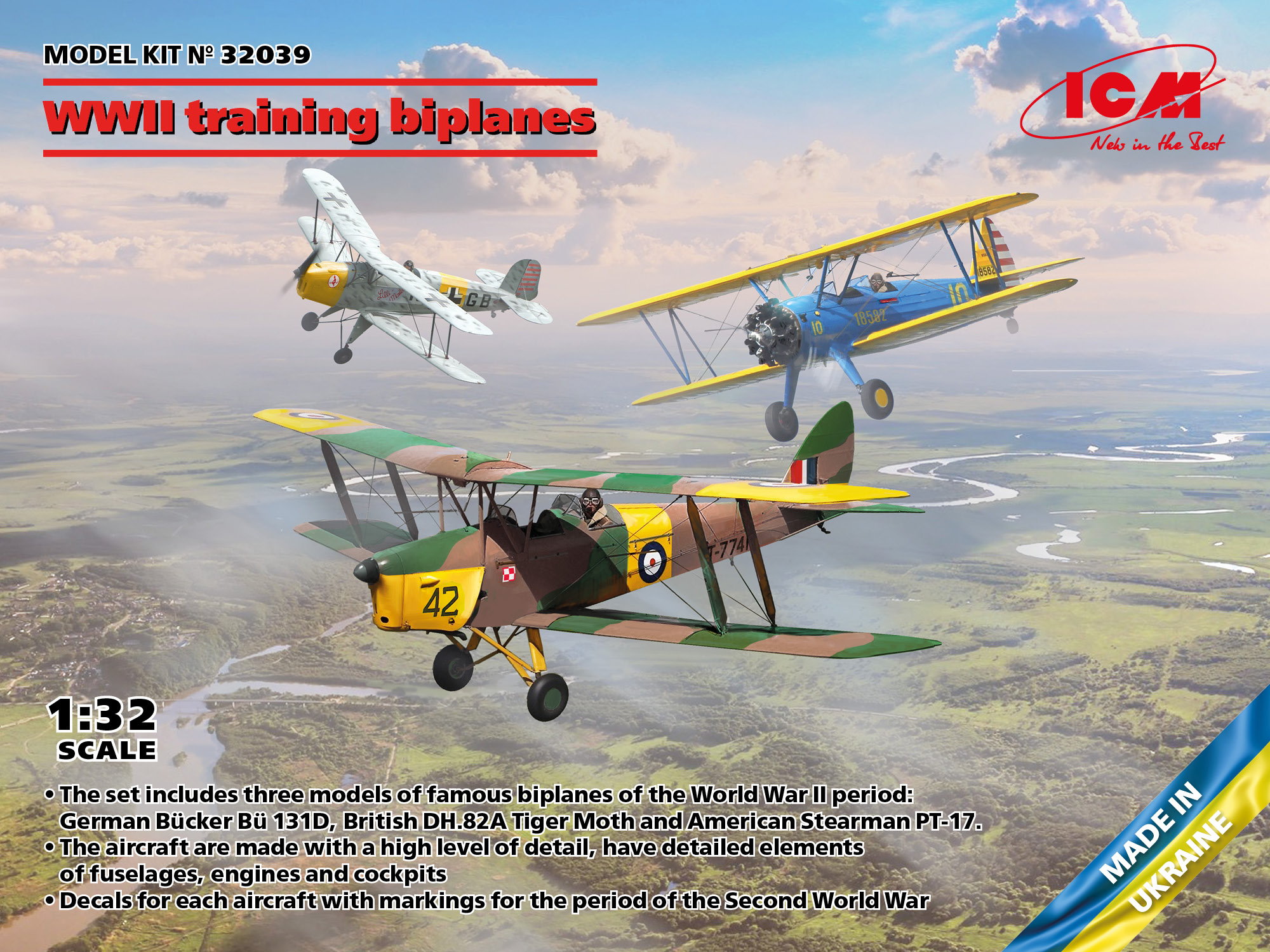 1/32 WWII training biplanes
1/32 WWII training biplanes
(Bücker Bü 131D, DH.82A Tiger Moth, Stearman PT-17)
In 1930s biplanes were gradually being replaced by monoplanes in the air forces of major countries. However, biplanes also had their advantages, including greater stability in the air, good maneuverability, reliability, and the ability to take off from a short runway. Due to this, many biplanes continued to be used as training or communication aircraft. Among these aircraft were the German BückerBü 131D, the British DH.82A Tiger Moth, and the American Stearman PT-17. All these models were produced in large series of several thousand units. They had good performance, reliability, and were used in many parts of the world. Their versatility made it possible to use these biplanes for a wide variety of purposes, such as the episodes of the DH.82A Tiger Moth’s use as a light bomber. Many of these aircraft remain in service to this day, participating in exhibitions and air shows.
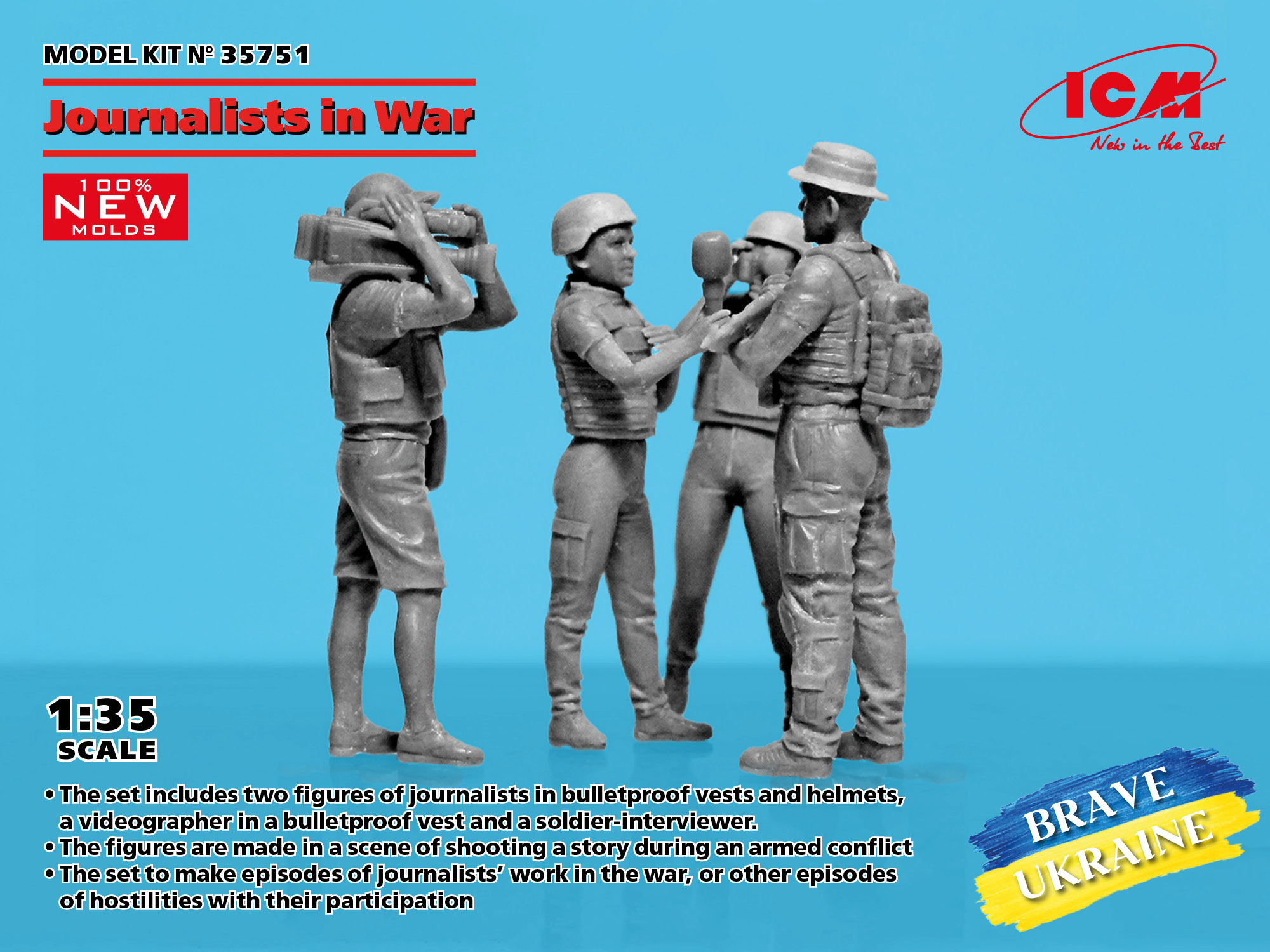 1/35 Journalists in War
1/35 Journalists in War
(4 figures)
The work of journalists during hostilities is difficult and dangerous. They often risk their lives on the front lines, sometimes even getting seriously injured or captured. But their work is necessary, they have to fulfill one of the main tasks of journalism – to cover events objectively, to prepare unbiased and truthful materials. Information blocks, interviews and journalistic reports from armed conflict zones always arouse great interest in society, especially when it is the society of a country at war. In the modern period of history, when social media are widespread and most people have almost unlimited access to information, correct and unbiased reporting plays a very important role and can even influence the development of an armed conflict.
HobbyLink International
Hoblylink International Shop
eBay Store



